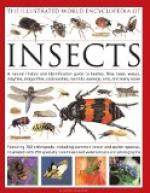DRAGON FLY.
[Illustration]
Of these flies, which are called by many Spindles, there are various species. They all have two very large eyes, covering the whole surface of the head. They fly very swiftly, and prey upon the wing, clearing the air of innumerable little flies. The great ones live about water, but the smaller are common among hedges, and about gardens.
BUTTERFLY.
[Illustration]
Of butterflies there are many kinds. How wonderful the various changes of this class of insects! The butterflies lay their eggs: from these hatch out worms or caterpillars, which change their skins several times, and, finally, become aureliae, chrysales, or silkworms, out of which come the beautiful butterflies.
SPIDER.
[Illustration]
There are many kinds of spiders; some of which are said to grow to such a size that they will catch small birds: some are poisonous, but the greater part are harmless, although to most people their looks are disgusting. The web of a spider, which is a net for catching its prey, is an astonishing piece of curiosity.
SILK WORM
[Transcriber’s Note: The heading ‘silk worm’ was added in order to improve clarity.]
[Illustration]
The silk worm is a very valuable insect: it is produced from an egg of a yellowish colour, about the size of a small pin’s head, that is laid by a moth, or butterfly. The above cut represents a male and female, and her eggs, of which she lays several hundreds: the moths live but a few days; they never eat, and die directly after the eggs are laid.
[Illustration]
This cut shews the appearance of the worm, which at first is very small and black. Its food is the leaves of the white mulberry: as it grows in size, at four different periods, it apparently sickens, and changes its skin, and finally, when full grown, it spins a ball of silk, called a cone, or cocoon, the thread of which is about three hundred yards long: in the centre of this ball the worm entombs itself, and experiences a change to a state called an aurelia, or chrysallis, as seen below the ball: from this aurelia, the moth that lays the eggs is hatched, and thus goes on the round of this animal’s changes, or transmigrations.
They are natives of China, and were brought into Italy, above twelve hundred years ago; from thence into Spain; afterwards into France; much later into Germany and the northern countries; and some have been reared in the United States of America.
SAMUEL WOOD
Hereby informs the good little Boys and Girls, both of city and country, who love to read better than to play, that if they will please to call at his juvenile Book-store, no. 357, Pearl-street, New-York, it will be his pleasure to furnish them with a great variety of pretty little books, with neat nuts, calculated to afford to the young mind pleasing and useful information. Besides many from Philadelphia, New Haven, and elsewhere, he has nearly fifty kinds of his own printing, and proposes to enlarge the number.




